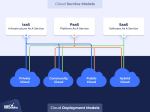“Kafka is an event streaming platform used for reading and writing data that makes it easy to connect Microservices.’
When you’re setting up a Microservice Architecture, one of your first major decisions is whether to have the services communicate directly with each other, or whether to use a broker system. Since the broker model is more flexible and failure-resistant, it’s likely you’ve more or less decided to choose that. However, you may be concerned that the broker will become a bottleneck in the system if traffic is heavy.
Apache Kafka, a distributed, partitioned commit log service that acts as a messaging system but with a flair all its own. Developed at LinkedIn to ingest event data, Kafka is designed to collect, hold and dispense enormous amounts of data.
What Is Apache Kafka
Kafka has numerous advantages. Today, Kafka is used by over 80% of the Fortune 100 across virtually every industry, for countless use cases big and small. It is the de facto technology developers and architects use to build the newest generation of scalable, real-time data streaming applications. While these can be achieved with a range of technologies available in the market, below are the main reasons Kafka is so popular.
Before we go into more depth about the platform, we need to get familiar with some Kafka terms.

- Event: in Kafka, data is called an event
- Topic: a topic is an identifier used for organizing events. Producers and consumers can read and write to a topic in real time
- Producer: Kafka uses producers to publish events to a topic
- Consumer: these read events from a topic
- Broker: servers in Kafka are called brokers
- Cluster: several brokers working together forms a cluster, which protects events from loss. This is critical because events and topics can be replicated across one or more brokers
Kafka-centric Microservice Architecture
Apache Kafka aims to solve the scaling and reliability issues that hold older messaging queues back. A Kafka-centric microservice architecture refers to an application setup where microservices communicate with each other using Kafka as an intermediary.
This is made possible with Kafka’s publish-subscribe model for handling the writing and reading of records. The publish-subscribe model (pub-sub) is a communication method where the sender merely sends events — whenever there are events to be sent— and each receiver chooses, asynchronously, which events to receive.
Kafka-centric Microservice Architectures are often more scalable, reliable, and secure than traditional monolithic application architectures — where one big database is used to store everything in an application.
Let’s take a brief look at why Kafka is a particularly good choice for Microservices.
Why Use Kafka At The Heart Of Your Microservice Architecture
1. The Kafka Ecosystem
Apache Kafka is designed for easy connectivity to a number of open-source systems, and the ecosystem grows year by year. We’d go so far as to say Kafka is at its best when paired with stuff like analytic engines or search systems. With Kafka Connect, you can easily plug Kafka into other data systems, allowing data streams to flow with low latency for consumption or further processing. This way you can expand your architecture to a whole open-source ecosystem of ready-made connectors to various services, almost all of them free.
2. Integration To Existing Systems
Choosing Apache Kafka doesn’t mean throwing out everything you’ve set up before. Combining Kafka with other systems also applies to your existing ones.
You can use Kafka to transport either all of your data, or only a subset, to legacy systems to ensure backwards compatibility or to ensure that you can still use systems you’ve invested in previously.
3. Fault Tolerance And Scaling Through Clustering
Kafka’s clustered design makes it very fault-tolerant and scalable. When message load increases or the number of Kafka consumers changes, Kafka will automatically rebalance the processing load between the consumers. To increase throughput and scale up your services, just add nodes.
Note also that this removes the need for any external High Availability arrangements.
4. Advanced Access Control
The data you process may go to different endpoints, but with Kafka you can manage access to it through one centralized mechanism. Producers and consumers are configured to write to and read from only specified queues. This acts as an efficient access control mechanism, without your having to build a separate authentication structure on top.
You can improve your system’s security by using ACLs to restrict access to business-critical or classified parts. At the same time, though, you can empower people by giving them access to data that they may not otherwise ever see. For example, data scientists could use error reporting and website analytics to analyse their impact on customer satisfaction.
5. Store And Process Any Content
Kafka doesn’t care what the messages it stores contain, so you can use it for any type of content. This means that when your business needs change, you have the freedom to add any types of producers and consumers into the mix. Your business can grow and diversify without further infrastructure investments into service data processing.
Final Thoughts
The strong and scalable Kafka is the best choice for the majority of Microservices use cases. It solves many of the challenges with Microservice orchestration while providing features that microservices strive for, such as scalability, efficiency, and speed. Not only does Kafka provide high availability, but it also ensures that outages are minimized and that errors are handled gracefully with minimal service interruption. The capacity of Kafka to hold data for a specified amount of time is crucial. You can use this feature to rewind and replay events as needed.
🅐🅚🅖
Interested in Management, Design or Technology Consulting, contact anil.kg.26@gmail.com
Get updates and news on our social channels!
LATEST POSTS
- A Tale Of Two Frameworks: Spring Boot vs. Django
 “Spring Boot’s convention over configuration approach simplifies development, allowing developers to focus on building robust applications rather than wrestling with… Read more: A Tale Of Two Frameworks: Spring Boot vs. Django
“Spring Boot’s convention over configuration approach simplifies development, allowing developers to focus on building robust applications rather than wrestling with… Read more: A Tale Of Two Frameworks: Spring Boot vs. Django - Unleashing The Power Of Django
 “Django, akin to a Swiss Army knife, provides a comprehensive toolkit, facilitating developers in tackling diverse web development challenges with… Read more: Unleashing The Power Of Django
“Django, akin to a Swiss Army knife, provides a comprehensive toolkit, facilitating developers in tackling diverse web development challenges with… Read more: Unleashing The Power Of Django - Potential of Progressive Web Apps (PWAs)
 “PWAs are not just about technology; they are about creating meaningful connections with users.” Why PWAs Are the Next Frontier… Read more: Potential of Progressive Web Apps (PWAs)
“PWAs are not just about technology; they are about creating meaningful connections with users.” Why PWAs Are the Next Frontier… Read more: Potential of Progressive Web Apps (PWAs) - Unleashing The Power Of Spring Framework
 “Spring Framework simplifies enterprise Java development, but it does so in a way that embraces existing frameworks and infrastructure.” –… Read more: Unleashing The Power Of Spring Framework
“Spring Framework simplifies enterprise Java development, but it does so in a way that embraces existing frameworks and infrastructure.” –… Read more: Unleashing The Power Of Spring Framework - Key Trends Of OSINT In 2024
 “The future of OSINT lies in our ability to adapt and innovate. By embracing emerging technologies and ethical best practices,… Read more: Key Trends Of OSINT In 2024
“The future of OSINT lies in our ability to adapt and innovate. By embracing emerging technologies and ethical best practices,… Read more: Key Trends Of OSINT In 2024 - Can Google’s Carbon Language Replace C++?
 “While Carbon may excel in performance-critical domains, it cannot replace the versatility and extensive ecosystem of C++.” As the world… Read more: Can Google’s Carbon Language Replace C++?
“While Carbon may excel in performance-critical domains, it cannot replace the versatility and extensive ecosystem of C++.” As the world… Read more: Can Google’s Carbon Language Replace C++? - Integration of Design Thinking, Lean, and Agile
 “Innovation thrives when Design Thinking, Lean, and Agile converge, creating a powerful force that propels organizations towards excellence.” In today’s… Read more: Integration of Design Thinking, Lean, and Agile
“Innovation thrives when Design Thinking, Lean, and Agile converge, creating a powerful force that propels organizations towards excellence.” In today’s… Read more: Integration of Design Thinking, Lean, and Agile - Benefits Of Infrastructure as Code (IaC)
 “Infrastructure as Code is the single most important thing you can do to improve the agility, reliability, and security of… Read more: Benefits Of Infrastructure as Code (IaC)
“Infrastructure as Code is the single most important thing you can do to improve the agility, reliability, and security of… Read more: Benefits Of Infrastructure as Code (IaC) - Power Of Internet of Everything (IoE)
 “The true power of the Intebrnet of Everything lies not in the things themselves, but in the connections and insights… Read more: Power Of Internet of Everything (IoE)
“The true power of the Intebrnet of Everything lies not in the things themselves, but in the connections and insights… Read more: Power Of Internet of Everything (IoE) - How Is The Enterprise IoT Evolving?
 “IoT is not just about connecting things; it’s about connecting minds, creating experiences, and transforming industries.” Pavan Singh, IoT Mentor… Read more: How Is The Enterprise IoT Evolving?
“IoT is not just about connecting things; it’s about connecting minds, creating experiences, and transforming industries.” Pavan Singh, IoT Mentor… Read more: How Is The Enterprise IoT Evolving? - IT Pricing Strategy And Models
 “The art of pricing lies in finding the perfect balance between capturing value and satisfying customers.” In the ever-evolving landscape… Read more: IT Pricing Strategy And Models
“The art of pricing lies in finding the perfect balance between capturing value and satisfying customers.” In the ever-evolving landscape… Read more: IT Pricing Strategy And Models - What Is SYCL (“sickle”)?
 “SYCL provides a powerful and intuitive programming model that simplifies heterogeneous computing, allowing developers to write portable code that can… Read more: What Is SYCL (“sickle”)?
“SYCL provides a powerful and intuitive programming model that simplifies heterogeneous computing, allowing developers to write portable code that can… Read more: What Is SYCL (“sickle”)? - What Is A Data Lakehouse?
 “With a data lakehouse, organizations can break down data silos, democratize data access, and accelerate innovation by enabling data exploration… Read more: What Is A Data Lakehouse?
“With a data lakehouse, organizations can break down data silos, democratize data access, and accelerate innovation by enabling data exploration… Read more: What Is A Data Lakehouse? - 5G – The Future Of The Internet
 “5G is the next big step in the evolution of wireless technology. It will offer significantly faster speeds and lower… Read more: 5G – The Future Of The Internet
“5G is the next big step in the evolution of wireless technology. It will offer significantly faster speeds and lower… Read more: 5G – The Future Of The Internet - Ransomware Groups Are Switching To Rust
 “Rust is to Ransomware what a lockpick is to a thief – a powerful tool that can be used for… Read more: Ransomware Groups Are Switching To Rust
“Rust is to Ransomware what a lockpick is to a thief – a powerful tool that can be used for… Read more: Ransomware Groups Are Switching To Rust - Streaming Data Pipelines
 “A streaming data pipeline is like a river: it flows continuously, changes constantly, and requires monitoring to ensure it stays… Read more: Streaming Data Pipelines
“A streaming data pipeline is like a river: it flows continuously, changes constantly, and requires monitoring to ensure it stays… Read more: Streaming Data Pipelines - Why Rust Is Best?
 “Rust is a systems programming language that runs blazingly fast, prevents segfaults, and guarantees thread safety.” Rust is a modern… Read more: Why Rust Is Best?
“Rust is a systems programming language that runs blazingly fast, prevents segfaults, and guarantees thread safety.” Rust is a modern… Read more: Why Rust Is Best? - Database Sharding Explained
 “Database sharding is like breaking a large puzzle into smaller, more manageable pieces, enabling improved scalability, performance, and availability, but… Read more: Database Sharding Explained
“Database sharding is like breaking a large puzzle into smaller, more manageable pieces, enabling improved scalability, performance, and availability, but… Read more: Database Sharding Explained - Ambient Computing Will Be The Future Tech
 “Ambient computing creates a seamless technology-rich environment, but challenges in privacy, security, ethics, interoperability, user acceptance, and technical complexity must… Read more: Ambient Computing Will Be The Future Tech
“Ambient computing creates a seamless technology-rich environment, but challenges in privacy, security, ethics, interoperability, user acceptance, and technical complexity must… Read more: Ambient Computing Will Be The Future Tech - Key Trends Of OSINT In 2023
 “OSINT is not just a technique, it’s a mindset. It’s about looking at the world with an open mind and… Read more: Key Trends Of OSINT In 2023
“OSINT is not just a technique, it’s a mindset. It’s about looking at the world with an open mind and… Read more: Key Trends Of OSINT In 2023 - Why Is OSINT Important?
 “OSINT is not just a technique, it’s a mindset. It’s about looking at the world with an open mind and… Read more: Why Is OSINT Important?
“OSINT is not just a technique, it’s a mindset. It’s about looking at the world with an open mind and… Read more: Why Is OSINT Important? - DataOps Explained
 “DataOps is the practice of integrating data engineering and data analytics to enable agile development, testing, and deployment of data-driven… Read more: DataOps Explained
“DataOps is the practice of integrating data engineering and data analytics to enable agile development, testing, and deployment of data-driven… Read more: DataOps Explained - Transformation Platform as a Service (tPaaS)
 “tPaaS is all about enabling Digital Transformation by providing a platform that supports fast, agile and secure development and deployment… Read more: Transformation Platform as a Service (tPaaS)
“tPaaS is all about enabling Digital Transformation by providing a platform that supports fast, agile and secure development and deployment… Read more: Transformation Platform as a Service (tPaaS) - Hello Julia – Programming Language For Scientific Computing
 “Julia is a high-level, high-performance dynamic programming language designed for numerical computing, data science, and scientific computing.” The Julia Language… Read more: Hello Julia – Programming Language For Scientific Computing
“Julia is a high-level, high-performance dynamic programming language designed for numerical computing, data science, and scientific computing.” The Julia Language… Read more: Hello Julia – Programming Language For Scientific Computing - Top Programming Languages For Fintech
 “The top programming languages for Fintech are those that provide robust and secure frameworks for handling sensitive financial data, as… Read more: Top Programming Languages For Fintech
“The top programming languages for Fintech are those that provide robust and secure frameworks for handling sensitive financial data, as… Read more: Top Programming Languages For Fintech - How To Choose A NoSQL Database
 “SQL databases are like Excel spreadsheets. They’re good for storing structured data that you need to query in a specific… Read more: How To Choose A NoSQL Database
“SQL databases are like Excel spreadsheets. They’re good for storing structured data that you need to query in a specific… Read more: How To Choose A NoSQL Database - Zero Knowledge Proof Explained
 “Zero Knowledge Proof is a powerful cryptographic tool that enables secure and private communication without revealing sensitive information, making it… Read more: Zero Knowledge Proof Explained
“Zero Knowledge Proof is a powerful cryptographic tool that enables secure and private communication without revealing sensitive information, making it… Read more: Zero Knowledge Proof Explained - Embracing Decentralized CyberSecurity
 “Decentralized CyberSecurity moves responsibilities and controls away from the center, to the individual areas most vulnerable to attack today.” Security… Read more: Embracing Decentralized CyberSecurity
“Decentralized CyberSecurity moves responsibilities and controls away from the center, to the individual areas most vulnerable to attack today.” Security… Read more: Embracing Decentralized CyberSecurity - Global Impact of Ransomware Attacks
 “The global impact of ransomware attacks is a sobering reminder that cybersecurity is not just about protecting our data and… Read more: Global Impact of Ransomware Attacks
“The global impact of ransomware attacks is a sobering reminder that cybersecurity is not just about protecting our data and… Read more: Global Impact of Ransomware Attacks - Process Orchestrator Explained
 “Process orchestrator is the ultimate tool for achieving operational excellence, enabling you to optimize processes, improve productivity, and reduce costs.”… Read more: Process Orchestrator Explained
“Process orchestrator is the ultimate tool for achieving operational excellence, enabling you to optimize processes, improve productivity, and reduce costs.”… Read more: Process Orchestrator Explained - What Does Platform Engineering Do?
 “The success of a Digital Platform depends on the strength of its underlying engineering. Solid engineering principles ensure reliability, scalability,… Read more: What Does Platform Engineering Do?
“The success of a Digital Platform depends on the strength of its underlying engineering. Solid engineering principles ensure reliability, scalability,… Read more: What Does Platform Engineering Do? - Are Full-Stack Developers Obsolete?
 “According to the Stack Overflow 2016 Developer Survey, Full-Stack Developers are one of the highest-paid and most sought-after professionals today.”… Read more: Are Full-Stack Developers Obsolete?
“According to the Stack Overflow 2016 Developer Survey, Full-Stack Developers are one of the highest-paid and most sought-after professionals today.”… Read more: Are Full-Stack Developers Obsolete? - Top 5 Issues For Overusing Microservices
 “Microservices should only be seriously considered after evaluating the alternative paths.” The overuse of new architectural styles is common within… Read more: Top 5 Issues For Overusing Microservices
“Microservices should only be seriously considered after evaluating the alternative paths.” The overuse of new architectural styles is common within… Read more: Top 5 Issues For Overusing Microservices - Customer Experience (CX) Trends In 2023
 “Customer Experience is the next competitive battleground. It’s where business is going to be won or lost.” Tom Knighton, Executive… Read more: Customer Experience (CX) Trends In 2023
“Customer Experience is the next competitive battleground. It’s where business is going to be won or lost.” Tom Knighton, Executive… Read more: Customer Experience (CX) Trends In 2023 - Cognitive Computing In 2023 And Beyond
 “IBM defines Cognitive Computing as systems that learn at scale, reason with purpose and interact with humans naturally.” 2022 was… Read more: Cognitive Computing In 2023 And Beyond
“IBM defines Cognitive Computing as systems that learn at scale, reason with purpose and interact with humans naturally.” 2022 was… Read more: Cognitive Computing In 2023 And Beyond - Top 7 Digital Transformation Trends In 2023
 “The threat of a recession coupled with the ongoing need for transformation and growth means CIOs must make force multiplying… Read more: Top 7 Digital Transformation Trends In 2023
“The threat of a recession coupled with the ongoing need for transformation and growth means CIOs must make force multiplying… Read more: Top 7 Digital Transformation Trends In 2023 - Top 5 DevOps Trends in 2023
 “The Global DevOps market size is expected to expand at a CAGR of 24.59% by 2027, reaching over 22199.4 million… Read more: Top 5 DevOps Trends in 2023
“The Global DevOps market size is expected to expand at a CAGR of 24.59% by 2027, reaching over 22199.4 million… Read more: Top 5 DevOps Trends in 2023 - Top 5 Cybersecurity Predictions For 2023
 “Cybersecurity will continue to be a major focus for company leaders as they bolster their digital defenses in 2023 and… Read more: Top 5 Cybersecurity Predictions For 2023
“Cybersecurity will continue to be a major focus for company leaders as they bolster their digital defenses in 2023 and… Read more: Top 5 Cybersecurity Predictions For 2023 - Top 5 Cloud Computing Trends In 2023
 “Cloud Computing has been one of the most critical technologies of the last decade.” The ongoing mass adoption of Cloud… Read more: Top 5 Cloud Computing Trends In 2023
“Cloud Computing has been one of the most critical technologies of the last decade.” The ongoing mass adoption of Cloud… Read more: Top 5 Cloud Computing Trends In 2023 - 10 Technology Trends For 2023
 What are the best new technologies to learn to improve your career and knowledge? Technology today is evolving at a… Read more: 10 Technology Trends For 2023
What are the best new technologies to learn to improve your career and knowledge? Technology today is evolving at a… Read more: 10 Technology Trends For 2023 - Top 5 AI /ML Trends In 2023
 “AI continues to transform our world as companies look to win over consumers with intelligent experiences delivered in real time… Read more: Top 5 AI /ML Trends In 2023
“AI continues to transform our world as companies look to win over consumers with intelligent experiences delivered in real time… Read more: Top 5 AI /ML Trends In 2023 - Android Runs Better When Covered In Rust
 “C/C++ should no longer be used to start new projects and that Rust should be deployed where a language without… Read more: Android Runs Better When Covered In Rust
“C/C++ should no longer be used to start new projects and that Rust should be deployed where a language without… Read more: Android Runs Better When Covered In Rust - Cybersecurity Mesh Architecture (CSMA)
 “CSMA is geared toward simplifying security architecture by encouraging collaboration and integration of a corporate security architecture.” One of the… Read more: Cybersecurity Mesh Architecture (CSMA)
“CSMA is geared toward simplifying security architecture by encouraging collaboration and integration of a corporate security architecture.” One of the… Read more: Cybersecurity Mesh Architecture (CSMA) - Data Mesh And It’s Principles
 “Data Mesh is a strategic approach to modern data management and a way to strengthen an organization’s digital transformation journey,… Read more: Data Mesh And It’s Principles
“Data Mesh is a strategic approach to modern data management and a way to strengthen an organization’s digital transformation journey,… Read more: Data Mesh And It’s Principles - Hard Tech To Disrupt The Future
 “Affordable robotics, AI-driven sensor fusion, uninterrupted connectivity and supermaterials are merging into the technology stack to unlock massive new tranches… Read more: Hard Tech To Disrupt The Future
“Affordable robotics, AI-driven sensor fusion, uninterrupted connectivity and supermaterials are merging into the technology stack to unlock massive new tranches… Read more: Hard Tech To Disrupt The Future - Top 5 Cloud Computing Vulnerabilities
 “Protecting your organization requires accepting the fact that your systems will be breached at some point; therefore, your strategy should… Read more: Top 5 Cloud Computing Vulnerabilities
“Protecting your organization requires accepting the fact that your systems will be breached at some point; therefore, your strategy should… Read more: Top 5 Cloud Computing Vulnerabilities - What’s Next After Cloud Computing – Edge?
 “Now, some companies are looking to replace Cloud Computing with something called Sky, Edge, or Hybrid Computing.” In the past few… Read more: What’s Next After Cloud Computing – Edge?
“Now, some companies are looking to replace Cloud Computing with something called Sky, Edge, or Hybrid Computing.” In the past few… Read more: What’s Next After Cloud Computing – Edge? - Chip To Cloud IoT
 “Chip-to-Cloud IoT looks like a promising way to .build a more secure, useful and decentralized technology for all.” Shannon Flynn… Read more: Chip To Cloud IoT
“Chip-to-Cloud IoT looks like a promising way to .build a more secure, useful and decentralized technology for all.” Shannon Flynn… Read more: Chip To Cloud IoT - How To Secure The Cloud
 “Encryption, Configuration are one of the best ways to secure your Cloud Computing systems.’ Fortunately, there is a lot that you… Read more: How To Secure The Cloud
“Encryption, Configuration are one of the best ways to secure your Cloud Computing systems.’ Fortunately, there is a lot that you… Read more: How To Secure The Cloud - Top 7 Advanced Cloud Security Challenges
 “Before jumping feet-first into the Cloud, understand the new and continuing top Cloud Security challenges your organization is likely to… Read more: Top 7 Advanced Cloud Security Challenges
“Before jumping feet-first into the Cloud, understand the new and continuing top Cloud Security challenges your organization is likely to… Read more: Top 7 Advanced Cloud Security Challenges - Why Cloud Security Is Important
 “Cloud Security is the whole bundle of technology, protocols, and best practices that protect Cloud Computing environments, applications running in… Read more: Why Cloud Security Is Important
“Cloud Security is the whole bundle of technology, protocols, and best practices that protect Cloud Computing environments, applications running in… Read more: Why Cloud Security Is Important - Why Implement Zero Trust Security Model?
 “Zero Trust extends the principle of ‘least privilege’ to its ultimate conclusion: Trust no one and grant the least privilege,… Read more: Why Implement Zero Trust Security Model?
“Zero Trust extends the principle of ‘least privilege’ to its ultimate conclusion: Trust no one and grant the least privilege,… Read more: Why Implement Zero Trust Security Model? - Advantages And Disadvantages Of Cloud Computing
 “When weighing the Cloud Computing advantages and disadvantages, it’s important to keep the sources of those pros and cons in… Read more: Advantages And Disadvantages Of Cloud Computing
“When weighing the Cloud Computing advantages and disadvantages, it’s important to keep the sources of those pros and cons in… Read more: Advantages And Disadvantages Of Cloud Computing - Benefits Of Cloud Computing
 “Cloud Computing benefits organizations in many ways. In fact, the benefits are so numerous that it makes it almost impossible not… Read more: Benefits Of Cloud Computing
“Cloud Computing benefits organizations in many ways. In fact, the benefits are so numerous that it makes it almost impossible not… Read more: Benefits Of Cloud Computing - Why WebAssembly Is The Future Of Computing?
 “WebAssembly is a binary instruction format and virtual machine that brings near-native performance to web browser applications, and allows developers… Read more: Why WebAssembly Is The Future Of Computing?
“WebAssembly is a binary instruction format and virtual machine that brings near-native performance to web browser applications, and allows developers… Read more: Why WebAssembly Is The Future Of Computing? - Virtualization In Cloud Computing
 “Virtualization and Cloud Computing are often discussed interchangeably, but while they’re closely associated, these tech terms have crucial differences.” Virtualization… Read more: Virtualization In Cloud Computing
“Virtualization and Cloud Computing are often discussed interchangeably, but while they’re closely associated, these tech terms have crucial differences.” Virtualization… Read more: Virtualization In Cloud Computing - Cloud Service And Deployment Models
 “I don’t need a hard disk in my computer if I can get to the server faster… carrying around these… Read more: Cloud Service And Deployment Models
“I don’t need a hard disk in my computer if I can get to the server faster… carrying around these… Read more: Cloud Service And Deployment Models - Why Use Serverless Computing
 “Serverless Computing is a Cloud computing execution model that lets software developers build and run applications and servers without having… Read more: Why Use Serverless Computing
“Serverless Computing is a Cloud computing execution model that lets software developers build and run applications and servers without having… Read more: Why Use Serverless Computing - Spatial Computing Revolutionizing Our World
 “Today, new technologies are advancing at dizzying speeds –impacting all areas of our lives, including how we shop and pay… Read more: Spatial Computing Revolutionizing Our World
“Today, new technologies are advancing at dizzying speeds –impacting all areas of our lives, including how we shop and pay… Read more: Spatial Computing Revolutionizing Our World - Trending Fullstack Frameworks
 “Writing the first 90 percent of a computer program takes 90 percent of the time. The remaining ten percent also… Read more: Trending Fullstack Frameworks
“Writing the first 90 percent of a computer program takes 90 percent of the time. The remaining ten percent also… Read more: Trending Fullstack Frameworks - Threat Intelligence Explained
 “Threat intelligence is evidence-based knowledge about an existing or emerging menace or hazard to assets that can be used to… Read more: Threat Intelligence Explained
“Threat intelligence is evidence-based knowledge about an existing or emerging menace or hazard to assets that can be used to… Read more: Threat Intelligence Explained - Docker’s Role In Microservices
 “Docker is an open platform for developing, shipping, and running applications. Docker enables you to separate your applications from your… Read more: Docker’s Role In Microservices
“Docker is an open platform for developing, shipping, and running applications. Docker enables you to separate your applications from your… Read more: Docker’s Role In Microservices - Why Is Kafka The First Choice For Microservices?
 “Kafka is an event streaming platform used for reading and writing data that makes it easy to connect Microservices.’ When… Read more: Why Is Kafka The First Choice For Microservices?
“Kafka is an event streaming platform used for reading and writing data that makes it easy to connect Microservices.’ When… Read more: Why Is Kafka The First Choice For Microservices? - Pros And Cons Of Microservices Architecture
 “Microservices Architecture has become increasingly popular in recent years. It offers a number of advantages over traditional monolithic architectures, but… Read more: Pros And Cons Of Microservices Architecture
“Microservices Architecture has become increasingly popular in recent years. It offers a number of advantages over traditional monolithic architectures, but… Read more: Pros And Cons Of Microservices Architecture

